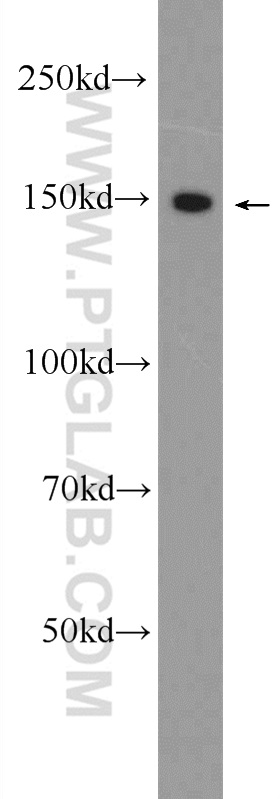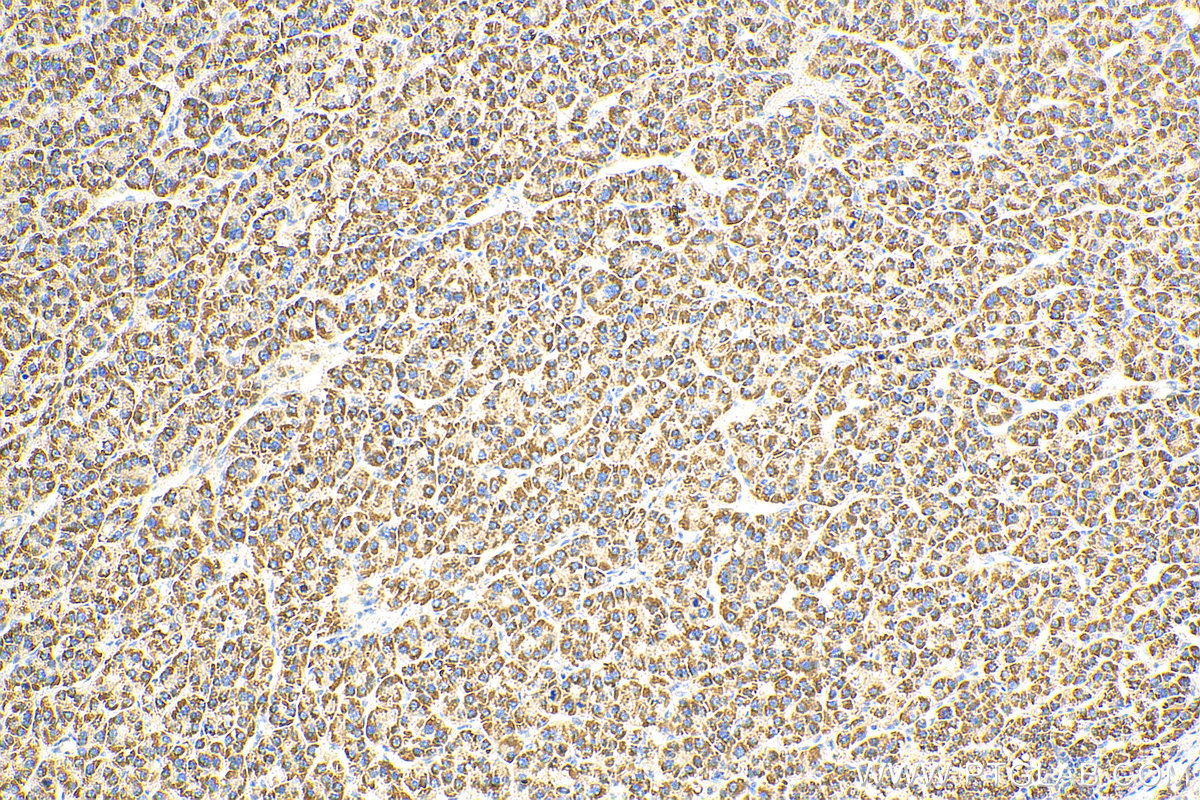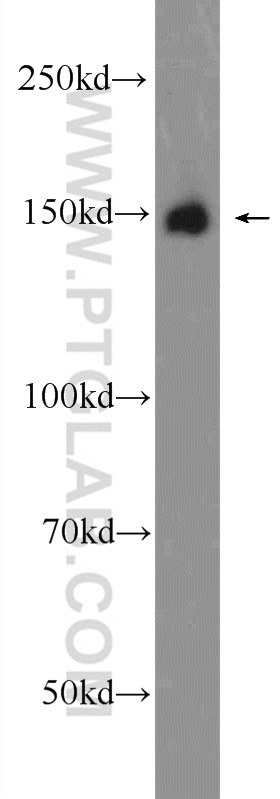验证数据展示
经过测试的应用
| Positive WB detected in | HepG2 cells, HeLa cells, rat liver tissue, mouse liver tissue, L02 cells |
| Positive IHC detected in | human liver cancer tissue Note: suggested antigen retrieval with TE buffer pH 9.0; (*) Alternatively, antigen retrieval may be performed with citrate buffer pH 6.0 |
推荐稀释比
| 应用 | 推荐稀释比 |
|---|---|
| Western Blot (WB) | WB : 1:500-1:2000 |
| Immunohistochemistry (IHC) | IHC : 1:50-1:500 |
| It is recommended that this reagent should be titrated in each testing system to obtain optimal results. | |
| Sample-dependent, Check data in validation data gallery. | |
产品信息
24513-1-AP targets CPS1 in WB, IHC, ELISA applications and shows reactivity with human, mouse, rat samples.
| 经测试应用 | WB, IHC, ELISA Application Description |
| 经测试反应性 | human, mouse, rat |
| 免疫原 | CPS1 fusion protein Ag21605 种属同源性预测 |
| 宿主/亚型 | Rabbit / IgG |
| 抗体类别 | Polyclonal |
| 产品类型 | Antibody |
| 全称 | carbamoyl-phosphate synthetase 1, mitochondrial |
| 别名 | CPS1, CPSase I |
| 计算分子量 | 1500 aa, 165 kDa |
| 观测分子量 | 140-165 kDa |
| GenBank蛋白编号 | BC140943 |
| 基因名称 | CPS1 |
| Gene ID (NCBI) | 1373 |
| RRID | AB_2879583 |
| 偶联类型 | Unconjugated |
| 形式 | Liquid |
| 纯化方式 | Antigen affinity purification |
| UNIPROT ID | P31327 |
| 储存缓冲液 | PBS with 0.02% sodium azide and 50% glycerol , pH 7.3 |
| 储存条件 | Store at -20°C. Stable for one year after shipment. Aliquoting is unnecessary for -20oC storage. |
背景介绍
Carbamoyl phosphate synthetase 1 (CPS1) is the first rate-limiting enzyme in the urea cycle, converting ammonium into carbamoyl phosphate, and plays an intricate role in arginine metabolism and pyrimidine metabolism (PMID: 28376202). CPS1 expression is liver specific and suppressed in HCC cells and tumor tissues at the transcriptional level(PMID: 21281797). CPS1 gene comprises 38 exons that encode a polypeptide of 1500 amino acids and has a molecular weight of 165 kDa.
实验方案
| Product Specific Protocols | |
|---|---|
| WB protocol for CPS1 antibody 24513-1-AP | Download protocol |
| IHC protocol for CPS1 antibody 24513-1-AP | Download protocol |
| Standard Protocols | |
|---|---|
| Click here to view our Standard Protocols |




